Soluzioni software per operatori di trasporto
APPIA.trans è un software per gestire in modo efficiente il trasporto di merci con mezzi propri o con agenzie di trasporto. Scopri come APPIA.trans sia in grado di ottimizzare i costi di trasporto grazie alle procedure guidate di pianificazione dei percorsi di consegna.
come si integra con le agenzie e come emette la documentazione di trasporto. Facile. Inoltre, scopri quanto sia facile condividere un sito Web con i tuoi clienti in cui poter tracciare le spedizioni e accedere alle prove di consegna (POD).

appia.trans
Software per operatori di trasporto
- Gestione spedizioni. Criterio del miglior prezzo. Fogli di carico
- Integrazione con agenzie di trasporto
- Monitoraggio degli invii e accesso alla prova di consegna (POD)
- Gestione ADR
- Fatturazione
- Integrazione completa con altri sistemi
appia.rf.voice
Entra in una nuova dimensione per la gestione del tuo magazzino con APPIA.rf.voice. Agilità e usabilità come mai immaginate prima, con la combinazione naturale della lettura dei codici a barre con voce e udito. Personalizza il funzionamento, adattalo alle tue esigenze e inizia a lavorare. Facile.
appia.go
Condividi un sito Web con i tuoi clienti in cui poter seguire le spedizioni e accedere alle prove di consegna (POD) e dove possono ordinare ritiri e consegne. Rafforza la tua vetrina tecnologica per i clienti con APPIA.go risparmiando costi ed errori.
appia.mobile
Le tue consegne in tempo reale con APPIA.mobile. Gli autisti ricevono i ritiri e le consegne programmate sul cellulare e li confermano online con firma, foto e note. Componente aggiuntivo naturale per la distribuzione con mezzi propri.
appia.monitor
Visualizza il funzionamento quotidiano del tuo magazzino, i processi e i tuoi KPI preferiti. Decidi dove posizionare i monitor e gli schermi e cosa visualizzare su ognuno di questi. APPIA.monitor si occuperà del resto. Integra la tecnologia de Microsoft PowerBI.
appia.tabula
Lascia che APPIA.tabula si occupi delle attività di routine e risparmia tempo ed evita le dimenticanze. Questo robot esegue automaticamente le attività programmate nella periodicità schedulata. È in grado di inviare e importare file, stampare, inviare e-mail, integrarsi con clienti, fornitori o agenzie di trasporto, e molto altro.
Scarica la scheda tecnica
Perché acquistare quando è possibile noleggiare?
Siamo un’azienda diversa con idee diverse. Siamo i tuoi compagni di viaggio. Ecco perché il nostro servizio di noleggio “all inclusive” propone di accompagnarti dal primo minuto di installazione e avvio del software. E in più, è un’opzione senza rischi perché non comporta alcun impegno di permanenza né alcuna penale. Ti rendiamo il lavoro facile.
Vuoi migliorare la gestione del tuo magazzino?
Contattaci!
Frequently asked questions
A TMS (transport management system) is a transport management software that allows companies to automate their logistics processes to improve their efficiency.
Using a TMS not only helps us to make transportation more efficient, but also, depending on the software, to make it an intelligent transportation, which optimizes routes in a predictive way, controls parcels, and provides us with metrics and key indicators. In addition, these systems also contribute to making transportation more sustainable, since optimizing routes reduces fuel consumption, and therefore CO2 emissions.
As with other logistics and transport software, the first thing we must ask of this type of system is that it be flexible, that is, that its functionalities can be adapted to the specific needs of our company. However, there are some functionalities that are usually common:
- Real-time information, overall, for all transport routes, or for a specific order. It is essential that the TMS allows us to control the transport status of the goods.
- Synchronization, which means, being able to coordinate transport with the warehouse, with the supplying logistics company and with the recipient of the goods, be it an intermediary customer or the end customer.
- Traceability is essential in logistics.
- Optimization of transport routes, both globally and specifically for each carrier, especially if there are incidents in the routes that were initially defined.
Transportation and logistics software is essential to correctly manage the complexity of today’s supply chain, and to optimize transportation, especially in the so-called “last mile”, a critical point where most supply chain costs and errors are concentrated. Therefore, the main advantages of using a transport and logistics software are:
- The entire logistics process is streamlined, from warehouse collection, delivery routes, and even reverse logistics processes.
- Accurate, real-time information on the entire supply chain (traceability).
- Better integration with suppliers, clients, and final customers.
- Reduction of errors due to manual process or non-automated processes.
- Cost reduction.
- Increased customer satisfaction.
Nowadays, every company must be clear about its needs and requirements when choosing a software, since the market offers an infinite number of solutions. The main criteria to consider are the following:
- Choose a specific software for transport companies. Generic software that are then adapted by sector or company, end up not responding in the same way, so it is better to choose a supplier that develops software for our sector.
- Integration is essential, both with other internal invoicing and accounting programs, as well as with third-party and external programs, such as the warehouse network.
- We must make sure that the supplier company has a good support team to help us with the implementation as well as with training and support in case of any incident, and that they carry out periodic updates.
- The program should be flexible and scalable, to meet both our current needs and those we may have in the medium and long term.
Transport companies operate in an increasingly complex industry, both due to the increase in online orders and the oversaturation of the transport routes themselves, as well as the stress on the global supply chain. As a result, they need tools that enable them to optimize their processes, especially with regard to the speed and efficiency of transport routes.
With a program for carriers, companies can optimize their routes to make them faster, both in planning and in the search for alternatives to incidents, they can automate tasks to gain speed and minimize errors, such as email delivery of proof of receipt of goods, and improve communication between the parties involved, with better traceability of the goods. In addition, route optimization also helps to reduce fuel consumption.
Each company has different requirements, depending on its size, the sector in which it operates (urban transport, refrigerated goods transport, international transport…).
However, there are some considerations that are common to all companies:
- Traceability: today, no transport company can value a software that does not offer accurate and real-time traceability of goods.
- The calculation and optimization of the route for the transport, is usually another of the most demanded functionalities.
- Automatic notifications, to be aware of information that interest us, without the need to enter into the application every moment.
- Flexibility, it means, we can adapt the app’s functionalities to the specific needs of our company. In addition to the first three, each logistics company may have different requirements, and the application must be able to respond to them.
A TMS or Transport Management System contributes to improve transport management in different ways:
- It reduces delivery times by optimizing transport routes.
- It reduces transport costs: fuel, need for less fleet…
- Centralizes information to gain efficiency in daily management.
- Improves urban logistics, one of the most complex and time-consuming.
- It integrates to control and optimize billing, and especially the extra costs associated with the service.
WMS or logistics management software is only necessary for a transport company if it has its own storage space. So, what are the advantages of using a WMS?
- You gain in speed, especially in the planning and optimization of transport routes.
- There is complete traceability of the goods, especially in the “last mile” and reverse logistics, two critical points for transport companies.
- Improved communication between the different integrates of the supply chain.
- Reduction of errors, and therefore the costs associated with these errors and delays…
- Increased end-customer satisfaction.
Nowadays, transport software can have an infinite number of functionalities. However, there are some common ones that should be taken into account when deciding on one TMS or another, for example:
- Capacity to manage shipments.
- Integration with the transport agency, warehouse and/or logistics company, as well as integration with internal systems such as invoicing.
- Traceability: Tracking of shipments and access to proof of delivery.
- Scalability: the program must have the ability to adapt in the short, medium, and long term to our specific needs.
Testimonianze
Il mio rapporto con APPIA GROUP by VGG non è mai stato come fornitore, ma come partner. Ci siamo aiutati a vicenda a crescere e qui sta la chiave del successo professionale di APPIA GROUP by VGG.
Un altro fattore importante sono le persone che dimostrano giorno dopo giorno di essere la base del futuro, sia le persone che sono con noi da anni che le nuove reclute.
Il mercato della logistica è un mercato molto diversificato, ma sia il programma che la formula di contrattazione dei servizi presentata è molto potente e cattura l’interesse fin dal primo istante
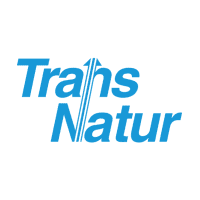
APPIA GROUP by VGG non è semplicemente un software di gestione logistica, ma uno strumento imprescindibile per la gestione e l'ottimizzazione dei processi nei magazzini. È parte integrante della nostra azienda.
Una delle sue principali virtù è la versatilità che ci permette di offrire ai nostri clienti, adattandoci continuamente alle loro esigenze.
Tutto questo è possibile grazie al team che lo compone, nel nostro caso Arantza Olmos, che consideriamo parte integrante di TSB.
Grazie al suo coinvolgimento, impegno e conoscenza del business, ci permette di migliorare continuamente fornendo soluzioni e contribuendo sempre con il suo punto di vista. Questa fiducia reciproca ci permette di crescere ed evolvere insieme nella gestione del nostro business.
Tutto questo non sarebbe possibile senza il chiaro valore del lavoro di squadra che APPIA GROUP by VGG dimostra quotidianamente, offrendo soluzioni rapide a qualsiasi tipo di problema che si presenti.
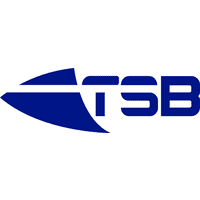
Nei 20 anni di lavoro con APPIA GROUP by VGG, e parlo a nome di tutti i miei colleghi, ne abbiamo viste di cotte e di crude, ma la cosa più importante è che hanno avuto sempre la capacità di trovare soluzioni a qualsiasi esigenza dei nostri clienti. Abbiamo conosciuto e vissuto insieme la grande evoluzione della logistica, con la soddisfazione che ogni volta che abbiamo fatto un adattamento, abbiamo imparato qualcosa di nuovo, che ci ha fatto crescere tutti dal punto di vista professionale.
A livello personale, non posso che valutarla come un'esperienza molto positiva, ed essendo stati tra i primi clienti, mi permetto di dire che come collaboratori siamo arrivati a instaurare un legame lavorativo e personale al limite di una grande amicizia.
Guardando al futuro, ci auguriamo di avere altri 20 anni di stretta collaborazione e grandi progetti.

Il lavoro, per definizione, e soprattutto nella logistica, è molto difficile.
La fretta, gli imprevisti, la concorrenza...la pressione continua ci perseguita. Se non avessimo il supporto, la fiducia e il buon lavoro dei nostri colleghi di APPIA GROUP by VGG, come faremmo?... e li chiamo "colleghi" perché lo sono, fanno parte della nostra azienda, ci conoscono e ci assistono sempre con grande pazienza, non è sempre facile, ma ci offrono sempre la loro migliore soluzione.
Sempre grazie a tutto il team.
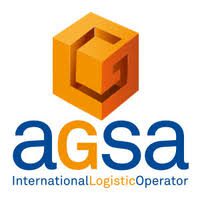
La nostra storia con APPIA GROUP by VGG è iniziata più di 15 anni fa, quando come piccola azienda di logistica eravamo alla ricerca di un software, reduci di una brutta esperienza. Fu allora che abbiamo conosciuto il signor Victor Gallego.
Siamo cresciuti insieme e, allo stesso tempo, abbiamo vissuto aneddoti indimenticabili, problemi incredibili e ore di lavoro interminabili, ma sempre con atteggiamento positivo e il sorriso sul volto.
Professionalmente sono cresciuti senza sosta, grazie ai grandi tecnici che ci lavorano, senza dimenticare il grande lavoro svolto dal supporto. Senza di loro APPIA GROUP by VGG non sarebbe l’azienda che è. Sempre all'ascolto, cercando di risolvere le esigenze di un settore in costante evoluzione.
La mia esperienza personale con APPIA GROUP by VGG non è neutrale perché negli anni oltre ad essere grandi professionisti sono diventati grandi amici.... Sergi, Ivan, Anna, Víctor, Martí, Xavier, Cristina, Arantza... Sono sicuro di aver dimenticato qualcuno. Alcuni di loro hanno preso la loro strada dopo l'esperienza di lavoro in APPIA GROUP by VGG e sono sicuro che questo li ha aiutati a imparare moltissimo.
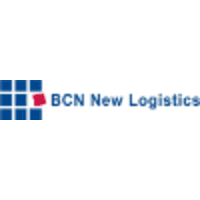
Vent'anni fa DCR inizia come azienda un nuovo percorso, affiancata da APPIA GROUP by VGG, il suo nuovo supporto informatico per il controllo dei magazzini.
Chi avrebbe detto che quella chiamata di Sergi López, che chiedeva di Susana e che avevo scambiato per un venditore di corsi ONLINE, sarebbe stata una delle tante conversazioni che avremmo avuto con voi.
La verità è che il passare del tempo non ci fa fermare a guardare le cose con prospettiva, ma non è meno vero che è un grande piacere vedere come entrambe le aziende si siano mantenute nel tempo e siano persino cresciute mano nella mano, in questo mondo così "cannibale".
Da parte nostra, sentiamo che APPIA GROUP by VGG ha saputo comprendere le esigenze degli operatori in ogni momento e adattarsi a queste, per fornire questo grande servizio, per il quale le siamo profondamente grati. Da ADP ad APPIA, i costanti miglioramenti ci hanno fatto sentire come operatore logistico sostenuto da voi in ogni momento e necessità.
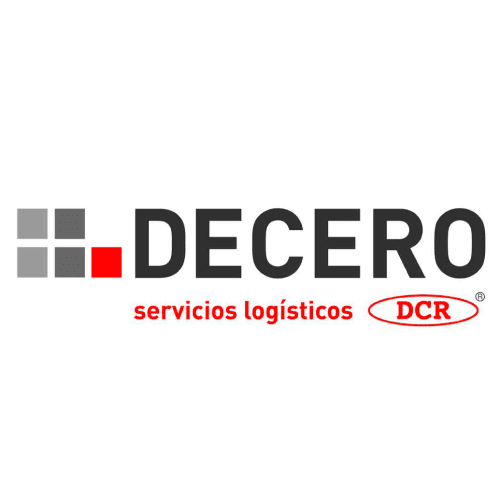
APPIA GROUP by VGG soddisfa le nostre esigenze come operatore logistico, ma soprattutto, la cosa più importante per noi, è il suo team di persone in grado di dare supporto nel momento del bisogno, e VGG sicuramente può vantarsene!
Proattività, per noi APPIA GROUP by VGG fa parte della nostra squadra dal 2010!
Prodotto specializzato per aziende di logistica, va sottolineata la personalizzazione del programma alle nostre esigenze, il suo facile e rapido adattamento ai cambiamenti nel settore e il grande supporto continuamente offerto.

La nostra opinione ad oggi è la migliore e non può essere altrimenti.
Durante tutto questo tempo, in cui abbiamo imparato a gestire APPIA in modo più efficiente e li abbiamo assaltati con domande, chiarimenti di dubbi, ordini adattati alla dinamica della nostra azienda, ecc..., il trattamento di tutti gli specialisti con cui abbiamo interagito è stato gratificante e professionale. Soprattutto il vostro e quello di Marina.
Vi siamo molto grati per la vostra cooperazione e pazienza.

Supporto da parte di un team esperto
Dal 1994 sviluppo di software logistico
Oltre 200 deployment gestiti
Deployment in Spagna, Francia, Portogallo, Italia, Colombia e Perù
